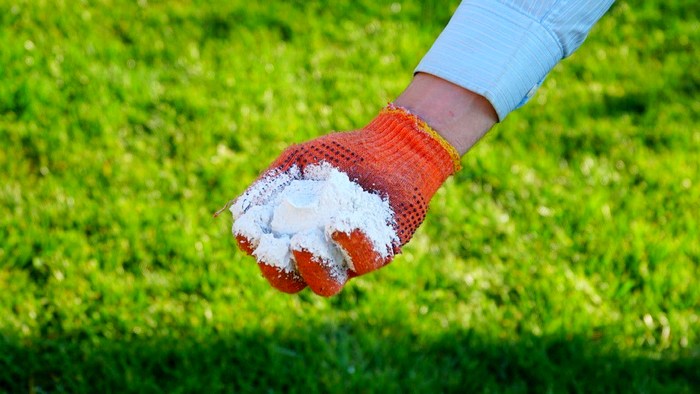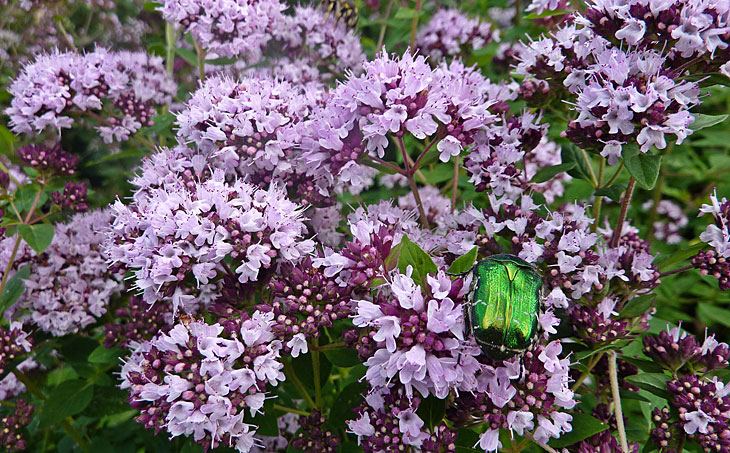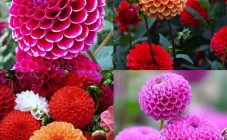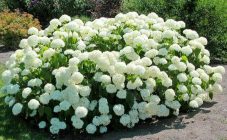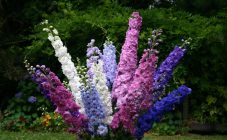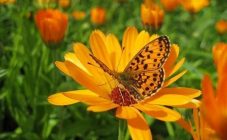Content:
The yellow gentian is a perennial herb. Gentians are widespread in Asia and Europe. The habitat is high-mountain meadows. The variety of gentian is great. Plants belong to the Gentian family. The name implies the presence of bitter parts in plants. The range of color variations is striking: from white to deep blue, for example, the Daurian gentian.
Over 90 species are used by humans for various purposes. Many of them are listed in the Red Book. The medicinal properties of gentians have long been known, but they should be used with caution, since there are a number of contraindications. The most popular use as a medicinal product is gentian root. In Chinese medicine, the use of gentian is common in the treatment of strokes, nephritis and hepatitis. Currently, planting blue gentians for decorative purposes is gaining popularity.
Kinds
The most popular types:
- Gentian seven-part Lagodekhi popular in Crimea and Asia Minor. It is a small plant, 30-40 cm in height. With many stems covered with small leaves, it blooms with dark blue flowers;
- Gentian cruciform or cross got its name due to its appearance. On the shortened rhizome, the stems (20-50 cm) are located in a cruciform manner, covered with oppositely sessile leaves;
- Spring gentian - dwarf form of gentian. Reaches a maximum of 10 cm in height. The flowers are small - 1-2 cm, blue;
- Large-leaved gentian or Cossack grass - tall plant, up to 70 cm. Blue-violet flowers, 15-20 mm in length, form on thick stems;
- Gentian stemless especially appreciated in decorations. A low crop, it blooms profusely with purple bell-shaped flowers;
- Rough gentian - similar to the stemless form of flowers, however, it is a taller plant (30-45 cm);
- Cross-leaved gentian - differs in the shape of flowers. Ovate with bent edges, deep blue, located in the leaf axils;
- Gentian stands out for its wound-healing properties tricolor or otherwise tricolor gentian. Its ultramarine inflorescences are located on the tops of the stems;
- For the treatment of pneumonia, cough and tuberculosis, an infusion of gentian leaves is used crotch or cotton wool... The gentian is a herbaceous plant for open ground, attractive for its good resistance to subzero temperatures.
Among all the variety, the yellow gentian stands out for its impressive size, reaching 1.5 meters in height. The small distribution of gentian is due to the difficulties in creating favorable conditions for flowering.
Features of agricultural technology
Gentian, planting and care of which should be based on natural growing conditions in the Altai Territory. You should plant gentian on the western side of the site. As a field plant, gentian grows best in open, illuminated areas. Only slight shading of the growing area is permissible. In this case, the place should be protected from strong northerly winds.
It is better to choose the soil as close as possible in composition to natural conditions.Loose, nutritious and well-moisturized soils with a high lime content are suitable for Yellow Gentian. The acid-base reaction of the soil must be neutral. When the balance is shifted, it is necessary to equalize it to pH 7.
The soil for gentian should be well moistened, while excessive stagnation of moisture should not be allowed.
Reproduction of culture
The abundance of natural species makes it possible to observe hybrid species. Gentian can be propagated in several ways: by seeds, dividing the bushes and cuttings.
There are two vegetative ways of breeding gentians: cuttings and division of bushes. The difficulty of these propagation methods is the poor tolerance of the plant to the transplant procedure. In addition, damage to tap roots is unacceptable - in this case, the transplanted plant will die.
Reproduction can be carried out by dividing the bush in the autumn. It is important to maintain maximum root ball volume during the process. Such a measure will increase the chances of survival of the separated part. Adult plants 4-5 years old are suitable for division. The aboveground part should be dug out together with the root system. Divide into several parts with a sharp object so that each part has a growth bud.
A more convenient and effective way of propagation is the formation of cuttings. It is better to choose the time before tying the buds of the plant. Only healthy bushes are suitable for this method. A small stalk should be separated, not exceeding 15 cm in length. It must be immediately rooted in moistened soil, with top dressing applied. To achieve the maximum rooting effect, the container with cuttings should be placed in a shaded place, carefully maintaining the moisture of the soil.
Breeding propagation is the most efficient way. However, it cannot be applied to all types of gentian. By securing the tilted stem with soil, you can plant a new shoot after the season.
Seed propagation
Gentian is usually propagated by seeds. When propagated by seeds, flowering begins at the age of five. The optimal planting time is October. In this case, the first shoots will appear in mid-late May.
It is permissible to plant seeds in the spring, after having carried out the stratification procedure. Stratification is the process of exposure to low temperatures to enhance the adaptive properties of a plant to adverse conditions. For this, seeds should be kept at a temperature of 2-5 ° C for 2-2.5 months. Before stratification, seeds must be mixed with sand or peat in a 1: 3 ratio.
The crop beds must be placed in shade. Before sowing, it is necessary to level the soil surface, sift and compact the soil. Sowing should be done superficially, slightly crushing the seeds into the soil, without sprinkling the seeds with soil from above. It is not necessary to insulate the garden for the winter.
Gentian grows at a low rate. By the end of the first season, a rosette of two or three leaves is formed, only 1-2 cm in height. For the next couple of years, this growth rate continues. No later than August in the first year after planting, a dive and rarefaction of the beds with seedlings should be carried out.
You can transplant gentian to a permanent place of growth 3 years after sowing the seeds. A distance of at least 50-60 cm must be maintained between neighboring plants.
Culture care
For full care, you should start by choosing the soil for growing gentian. An important condition for gentian yellow is the absence of stagnant water in the soil layer.Before planting, you must carefully dig up the ground, weed weeds. After that, you need to mix the earth layer with several buckets of compost. The plant is sensitive to the pH value, therefore lime should be regularly added to the soil layer, maintaining a neutral reaction.
The intolerance of the drying out of the soil can be neutralized by planting gentian near water bodies, a pool or a fountain.
As with other plants, it is imperative to loosen the earth, weed weeds and apply top dressing.
Fertilization with organic substances, for example, rotted manure, has a positive effect on the growth of gentian grass. During planting, bone meal or wood ash can be added to the bottom of the planting hole. During cultivation, commercial preparations of mineral substances with prolonged action give a good effect. It is necessary to use such dressings, strictly following the instructions prescribed by the manufacturer.
The yellow gentian begins to bloom after 4-6 years, in nature the age of the beginning of flowering is 9-12 years. During the first flowering, plants form a single shoot with a peduncle. Blooming begins in June and ends after 2.5-3 weeks in July. There are many gentian flowers in the peduncle, large in size (up to 2.5 cm), collected in bunches of 3-10 pieces. Beams are located at the top of the shoots in the leaf axils. The flowers are bisexual, with a double perianth. The calyx is faded yellow, 2 times shorter than the corolla. Corolla color is yellowish-golden. Flowering ends with the formation of fruits. The fruit is an oblong capsule with a stem. The capsule is opened along the partitions, pouring out numerous seeds with endosperm.
The lack of flowering can be caused by inappropriate conditions. Low illumination, non-compliance with the irrigation regime - unfavorable conditions for a flowering plant. In addition, the strong waterloggedness of the soil, the lack of organomineral substances also negatively affects the ability of gentian to bloom.
The choice of neighbors for gentian should be treated with special attention. The capriciousness of the culture in relation to the composition of the soil, the level of moisture and illumination imposes restrictions on the identification of neighboring crops. When selecting, you should focus on plants that have similar requirements. You need to avoid plants that suppress gentian with active growth. The fact of the tap root system of the gentian should be taken into account. Therefore, bulbous forms of plants will be a good neighborhood, in addition, creating the necessary shading from the scorching sun. You can create interesting compositions by planting them next to fern species, flowers, cereals.
Fertilization and feeding
Annual feeding activities are reduced to the introduction of peat mixed with shavings and sand into the soil in the spring. In case of an excessively acidic soil reaction, it is better to use fertilizers intended for rhododendrons. In the case of a strong alkaline reaction, it is necessary to add iron-containing organic compounds to the soil.
After feeding, it is necessary to make abundant watering, for better mixing of fertilizers with the soil. In addition to the root method of fertilizing, you can spray the gentian with aqueous solutions.
Preparation for wintering
Since most gentian species grow naturally in regions with harsh climatic conditions, the plants have good resistance to sub-zero temperatures. The yellow gentian tolerates winter well and does not require special events.The only thing is that when grown in regions with little snowy winters, to prevent freezing of plants, it is necessary to cover the gentian with spruce branches or any other covering material.
Summing up, we can say that yellow gentian can decorate the landscape design of the garden. Despite the exactingness of the growing conditions, the gentian has positive traits. High resistance to subzero temperatures, resistance to popular diseases and pests, as well as the ability to treat many diseases make the plant attractive.


